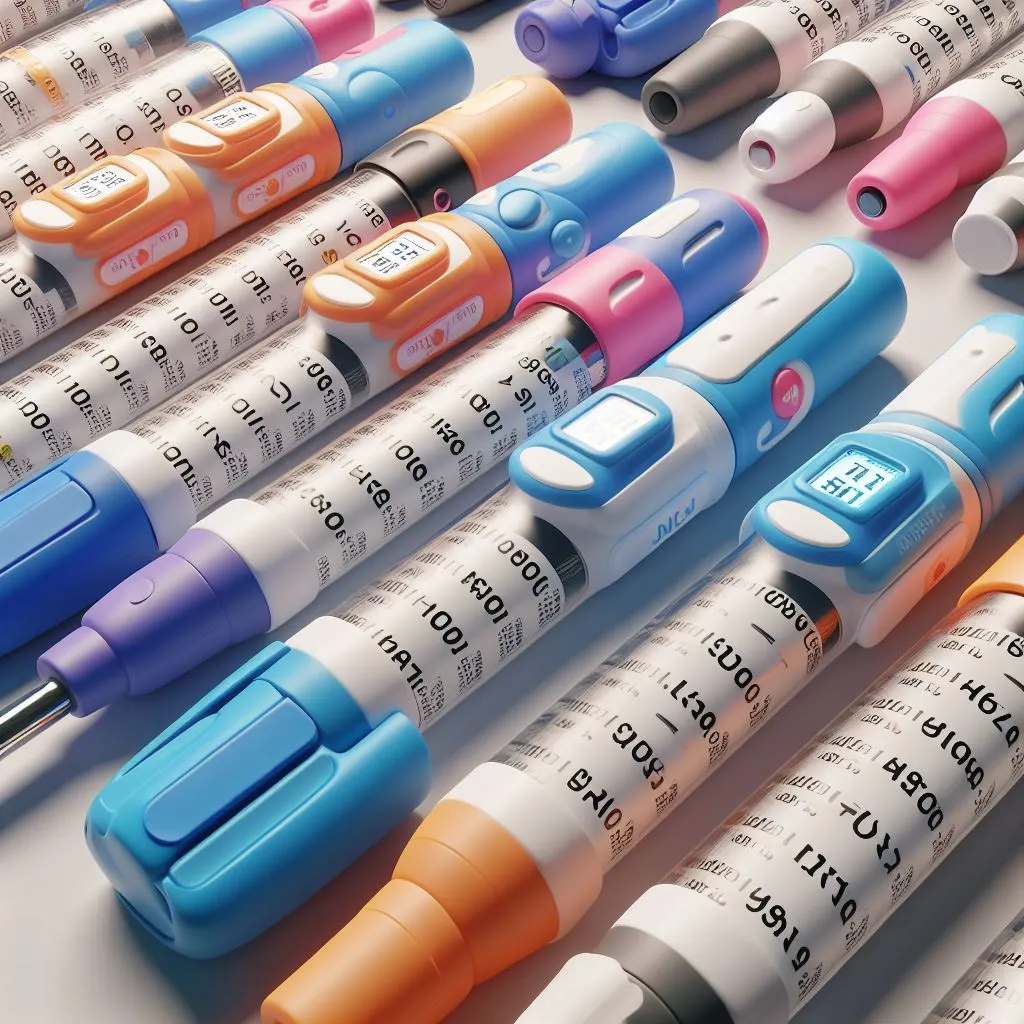Introduction
For people with diabetes, managing blood sugar levels is crucial for overall health. Insulin, a vital hormone, helps regulate blood sugar, and for many, insulin pen devices offer a convenient and effective way to deliver this essential medication. This article explores the world of insulin pen devices, guiding you through their types, benefits, and usage.
Traditional Pens vs. Smart Pens: Understanding the Options
Insulin pen devices come in two main categories: traditional pens and smart pens.
- Traditional Pens: These are the most common type. They are disposable or reusable, prefilled with insulin or designed for use with insulin cartridges. Traditional pens offer a simple and reliable method for administering insulin. They typically feature a dose dial for selecting the desired amount, a clear window to view remaining insulin, and a button to trigger the injection.
- Smart Pens: This is a newer and more advanced option. Smart pens function similarly to traditional pens but incorporate additional features that enhance diabetes management. They often connect to smartphones via Bluetooth and come with dedicated apps. These apps can store injection history, track insulin usage patterns, and even offer dose recommendations based on blood sugar levels (when paired with a continuous glucose monitor).
Here’s a table summarizing the key differences:
| Feature | Traditional Pens | Smart Pens |
|---|---|---|
| Type | Disposable or Reusable | Reusable |
| Connectivity | No | Bluetooth connectivity to smartphone apps |
| Features | Dose dial, injection button, insulin view window | All of the above, plus dose history tracking, potential dose recommendations |
Unveiling the Benefits of Insulin Pen Devices
Insulin pen devices offer several advantages over traditional vials and syringes:
- Convenience: Pen devices are compact and portable, making them ideal for on-the-go insulin delivery.
- Accuracy: Dosing dials ensure precise measurement, minimizing the risk of errors associated with manual measurement in syringes.
- Discretion: Pens are generally less noticeable than syringes, offering more privacy during injections.
- Ease of Use: Pens require minimal training to operate, making them user-friendly for people of all ages and abilities.
- Reduced Pain: Some pens come with thin needles, potentially reducing injection discomfort.
Smart pens add another layer of benefit:
- Improved Self-Management: Data tracking and potential dose recommendations from smart pen apps can empower users to make informed decisions about their diabetes care.
Choosing the Right Insulin Pen Device for You
With various insulin pen devices available, selecting the most suitable option depends on individual needs and preferences. Here are some factors to consider:
- Injection Frequency: If you require multiple injections daily, a reusable pen with cartridges might be more cost-effective and eco-friendly.
- Technological Comfort Level: For those comfortable with using apps and data analysis, smart pens can provide valuable insights.
- Insurance Coverage: Insurance plans may have coverage limitations for specific insulin pen devices.
Consulting your doctor or diabetes educator is vital to determine the most appropriate insulin pen device for you. They can guide you through the features, answer questions, and ensure you feel confident using the chosen device.
Mastering the Art of Insulin Pen Injections
Using insulin pen devices effectively requires proper technique. Here’s a general overview of the process (always refer to the specific instructions provided with your pen device):
- Wash your hands: Maintain hygiene to prevent infection.
- Attach a new needle: Use a fresh sterile needle for each injection to minimize discomfort and prevent contamination.
- Prime the pen: This step, explained in the pen’s instructions, ensures accurate dosing by removing air bubbles.
- Select your dose: Dial the desired amount of insulin using the dose selector.
- Choose an injection site: Rotate injection sites to prevent irritation and ensure proper absorption.
- Inject the insulin: Follow the pen’s instructions for injecting the insulin at a 90-degree angle into the subcutaneous tissue.
- Dispose of the needle safely: Use a sharps container specifically designed for used needles.
Remember, these are general guidelines. Always follow the specific instructions provided with your insulin pen device.
Living Well with Insulin Pen Devices
Insulin pen devices can be a valuable tool for managing diabetes. By understanding the different types of pens, their benefits, and proper injection techniques, you can confidently integrate them into your diabetes management routine. With the right pen device and ongoing support from your healthcare team, you can achieve optimal blood sugar control and live a healthy and fulfilling life.
Beyond the Basics: Advanced Considerations for Insulin Pen Devices
While the previous section covered the fundamentals of insulin pen devices, there’s more to explore. Here’s a deeper dive into some advanced considerations:
- Needle Length: Standard needles for insulin pens are typically around 4mm to 8mm long. However, for individuals with more body fat, a longer needle (up to 12mm) might be necessary to ensure proper injection into the subcutaneous tissue. Consulting your doctor can help determine the ideal needle length for you.
- Rapid-Acting vs. Long-Acting Insulin Pens: Some pen devices are designed for specific insulin types. Pens for rapid-acting insulin may have features like a faster injection speed to deliver the insulin quickly into the bloodstream. Conversely, pens for long-acting insulin might come with dose scales suitable for larger doses.
- Travel Tips: For those who travel frequently, insulin pen devices offer portability and convenience. However, some planning is essential. Always pack enough insulin and pen devices for your trip, considering potential delays. Ensure you have a doctor’s note for your insulin and sharps container if traveling internationally. Be mindful of temperature fluctuations and store your insulin according to manufacturer recommendations.
- Pen Needles and Disposal: Proper needle disposal is crucial to prevent injuries and infections. Always use a designated sharps container for used needles and never dispose of them in regular trash bins or recycling. Many pharmacies offer free sharps containers.
- Maintenance and Care: While some pen devices are disposable, others are reusable. For reusable pens, it’s essential to follow cleaning and maintenance guidelines as outlined in the manufacturer’s instructions. This typically involves wiping down the pen with disinfectant wipes, but avoid immersing the pen in liquids.
Emerging Technologies in Insulin Pen Devices
The world of insulin pen devices continues to evolve. Here’s a glimpse into some exciting advancements:
- Dosage Automation: Future pen devices might incorporate features that automatically calculate and deliver precise insulin doses based on blood sugar readings obtained from continuous glucose monitors.
- Voice-Controlled Pens: Voice-activated insulin pen devices are being explored, offering increased accessibility and convenience for users with vision impairments or dexterity limitations.
- Connected Insulin Delivery Systems: These next-generation systems might integrate insulin pens with smartphone apps and cloud-based platforms, allowing for real-time data analysis, remote monitoring by healthcare providers, and personalized insulin management recommendations.
Conclusion
Insulin pen devices have revolutionized diabetes management, offering a convenient, discreet, and user-friendly method for insulin delivery. As technology progresses, insulin pen devices are poised to become even more sophisticated, empowering individuals with diabetes to take greater control of their health. Remember, consult your doctor or diabetes educator to discuss if insulin pen devices are right for you and to receive personalized training on proper usage.





